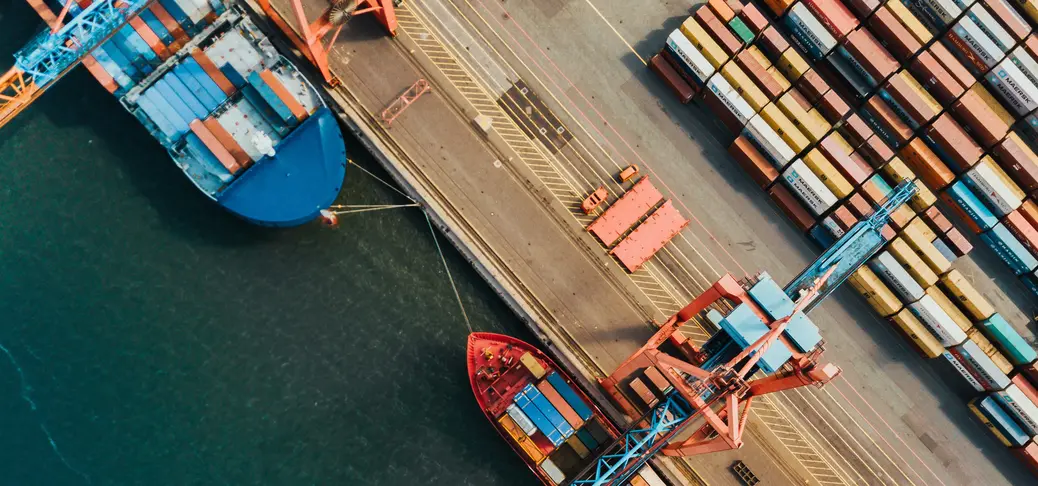Building resilient value chains: A blueprint for the next three decades
- 13 Oct 2025
- 4 min read
The manufacturing sector is undergoing a fundamental transformation, driven by forces that are reshaping how value chains are designed, operated, and sustained. Geopolitical tensions, climate challenges, regulatory complexity, and rapid technological advancements are accelerating the need for businesses to move beyond traditional strategies.
This shift is not merely an operational necessity but a long-term business imperative to stay competitive in an increasingly unpredictable global market.
In its report «From Shock to Strategy: Building Value Chains for the Next 30 Years», the World Economic Forum explores the path forward for manufacturers to build resilience while maintaining competitiveness, drawing from real-life use cases.
Over the past decade, value chains have evolved from fully global networks toward increasingly regionalized models. Today, nearly 90% of businesses are adjusting their supply chain strategies, embracing nearshoring, diversification, and dual sourcing. These adjustments are strategic responses to rising risks, such as supply chain interruptions caused by extreme weather events, cyber attacks, and regulatory changes.
At the core of this transformation are three pillars shaping value chains of the future: integrated sustainability, end-to-end collaboration, and technology adoption. These dimensions not only address the vulnerabilities in current systems but also unlock new opportunities for efficiency, innovation, and resilience.
#1 Integrated sustainability: Turning risk into opportunity
Sustainability has become a cornerstone of competitive advantage. By embedding environmental, social, and governance (ESG) principles into operations, companies are proactively addressing risks while optimizing costs and improving market positioning. For instance, cradle-to-cradle product design, closed-loop business models, and the adoption of alternative raw materials are enabling organizations to minimize waste while enhancing resource efficiency.
The Wuxi Industrial Park case
Consider the steps Schneider Electric has taken at Wuxi Industrial Park in China, recognized as Sustainability Lighthouse by the World Economic Forum in 2025. By implementing a take-back, exchange, and refurbishment model, we have aligned sustainability goals with customer needs, reducing the carbon footprint of operations while maintaining product quality. The results speak for themselves: refurbished products not only meet the highest standards but also deliver environmental and cost benefits.

However, achieving integrated sustainability requires more than internal efforts. Reducing Scope 3 emissions—a critical factor for most businesses—requires collaboration across the supply chain. This includes working closely with suppliers to adopt sustainable practices and leveraging tools for better emissions tracking and transparency.
#2 Collaboration beyond borders
End-to-end collaboration is key to creating agile and resilient supply chains. Companies that adopt interconnected supply networks, share resources, and integrate their operations with suppliers and customers are better equipped to navigate disruptions. This approach fosters transparency, reduces inefficiencies, and strengthens trust among stakeholders.
The Foxconn Industrial Internet case
Foxconn Industrial Internet, at Bac Giang site in Viet Nam, provides an example of end-to-end supply chain optimization. Material control and production planning is a challenge where 95% of material is imported. The integration of systems from ERP to e-customs achieved full supply chain visibility, alerting users to potential shortages eight weeks in advance and enabling the reallocation of materials company-wide. This provides the flexibility to respond to urgent or ad-hoc demands, ensuring nearly 100% on-time, in-full while reducing inventory levels.

Collaboration also extends to regulatory alignment. With compliance becoming increasingly complex across geographies, businesses must work with policymakers and industry peers to harmonize regulations. Data-sharing frameworks and cooperative regulatory environments can reduce ambiguities and foster smoother trade operations.
#3 Technology adoption: The engine of resilience
The adoption of advanced technologies and open automation is not just enhancing operational efficiency; it is redefining the boundaries of what’s possible. From AI and generative intelligence to IoT and blockchain, businesses are leveraging digital tools to create smarter, more adaptive supply chains.
The DHL Supply Chain case
One example of such innovation is the use of control towers to provide real-time visibility into supply chains. At one of their facilities in Memphis, DHL Supply Chain implemented a centralized logistics control tower, enabling to identify operational inefficiencies and optimize processes. By integrating data from various departments, the company achieved a 25% reduction in consolidation cycle time and improved picking efficiency by 11%. These gains are critical in environments where agility can make or break operational continuity.

Technologies such as AI are also enabling predictive decision-making, allowing companies to anticipate disruptions and reconfigure their operations in response. Blockchain, on the other hand, is addressing growing concerns around data privacy and cybersecurity, ensuring that supply chain processes remain transparent yet secure.
By 2040, the World Economic Forum predicts further integration of these three pillars, resulting in value chains that are both adaptive and sustainable. This evolution will likely include:
Hyperlocalized Operations
Regional clusters with integrated supply networks will dominate, reducing dependency on global sourcing.
Circularity as Standard Practice
Regulatory incentives will drive widespread adoption of circular economy principles, from product design to material recovery.
AI-Augmented Collaboration
Real-time data sharing, underpinned by secure and interoperable platforms, will enable seamless cooperation between partners.
These scenarios point toward a future where value chains are not only more resilient but also aligned with broader societal goals, including equity, environmental stewardship, and inclusive growth.
The choices made today will shape the opportunities of tomorrow, ensuring that industrial operations deliver value not just for shareholders but for communities, ecosystems, and future generations.
The manufacturing landscape of 2050 will demand that businesses think beyond profit margins. It will require an unwavering commitment to sustainability, collaboration, and innovation. The path forward is clear: businesses must act now to build supply chains that are resilient, adaptive, and future-ready.
Find out more about the eight key forces reshaping global manufacturing over the next three decades in «From Shock to Strategy: Building Value Chains for the Next 30 Years», a report developed by the World Economic Forum and the Global Future Council on Advanced Manufacturing and Value Chain, backed by extensive survey data and real-world use cases.

Latest in Digitalization
How AI at the edge is transforming HVAC systems for efficiency and comfort
Reinventing cities: Driving urban resilience with digital innovation
Maximizing building efficiency with advanced wireless IoT sensors
The rise of smarter homes: harnessing AI for energy efficiency and resilience

